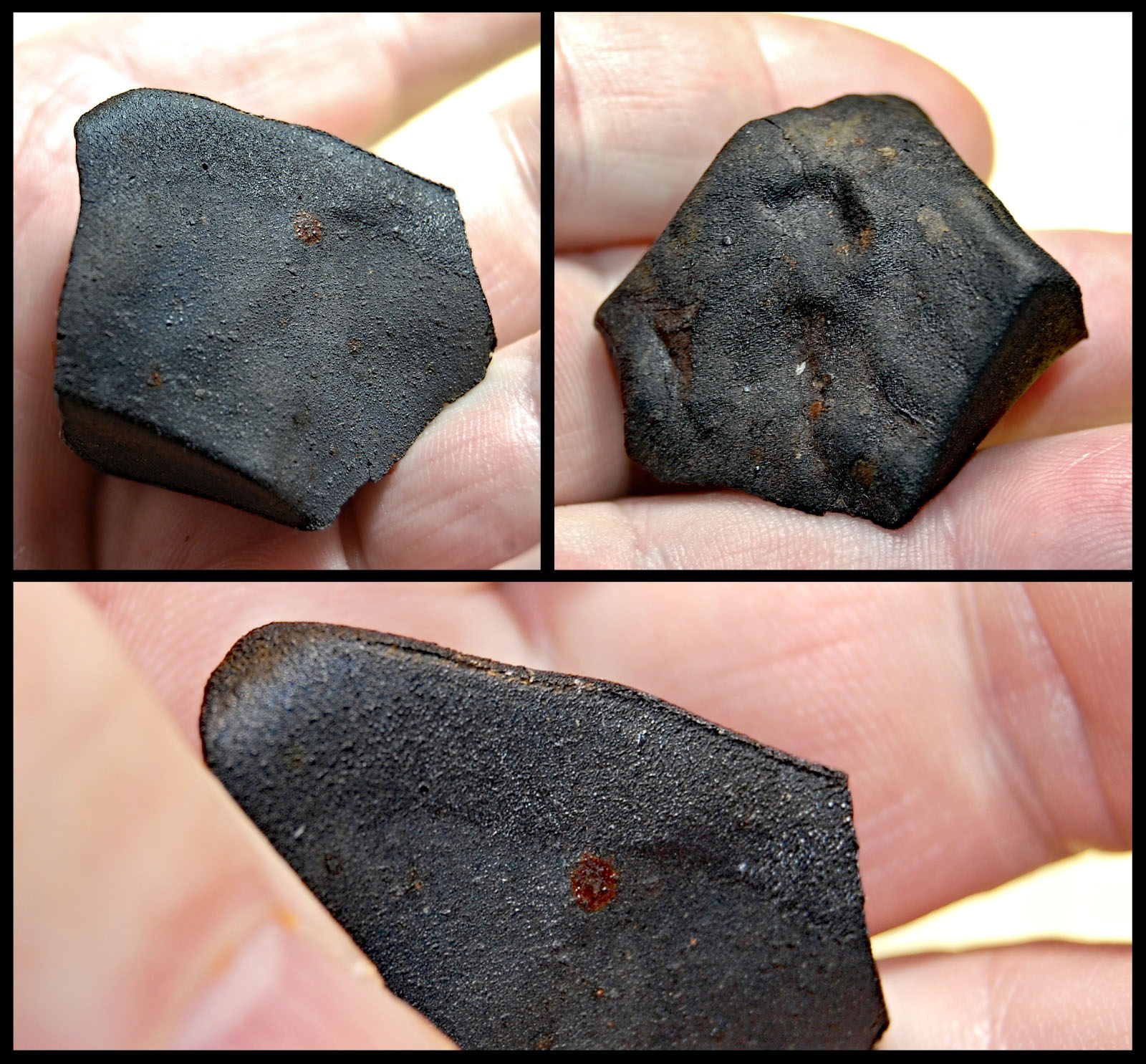|
Roll Overs:
#1
#2
#3
#4
#5
#6
#7
|

|
|
Copyright (c) Steve Brittenham.
|
24.6 and 41.2 grams. CM2
TKW ~12 kg. Observed fall 23 April 2019, Alajuela, Costa Rica.
   EarthSky EarthSky
Steve writes:
The Aguas Zarcas meteorite fell at 9:07 PM on Tuesday, April 23, 2019. As the fireball flew above the crater of the erupting Volcan Turrialba, its transit was captured on video by government cameras, dash cams, and security cameras across the country. The meteor exploded before impact, with some pieces hitting man-made objects, roofs, and even an occupied dog house.
At 27 kg, Aguas Zarcas was the largest fall of a rare CM2 class meteorite in recent history (only 1969’s 100 kg Murchison shower was larger). CM2s contain pristinely-preserved stardust made up of materials that predate our solar system. They also contain water and organic compounds left over from the solar system’s creation, as evidenced by the “Murchison-like” odor accompanying Aguas Zarcas’ fall. And like Murchison, Aguas Zarcas exhibits an abundance of left-handed amino acids (unlike the 50:50 distribution obtained when creating them in a lab) – additional evidence of an early solar system bias similar to terrestrial amino acids. But unlike Murchison, Aguas Zarcas is also anomalous, having features uncommon in other meteorites of its type: high levels of salts; brecciation; visible chondrule-rich clasts; bright blue-green iridescence on the fusion crust; and in some cases, enough metal to adhere to a magnet.
The smaller 24.6 gram stone in today’s post (Photo 1) was collected before the rains that followed the fall; the larger 41.2 gram stone (3D crossed-eyes Photos 2 and 3) was collected post-rain and provides an obvious indication of how a fresh meteorites’ fusion crust is modified by even just a short period of time exposed to water. Both stones exhibit rollover lips on their fusion crust (including a faint secondary one seen about halfway down the lower image in Photo 1), as well as defined splatters (3D crossed-eyes Photo 4). But unlike the arguably less interesting smaller stone – which developed fusion crust all the way around by tumbling before it oriented – the larger stone’s trailing edge is more unaltered, and it features several fractures, one of which is deep enough to clearly show CAIs and chondrules below the meteorite’s surface (3D crossed-eyes Photo 5). Both stones also exhibit glassy reddish-colored silicate melt (Photo 6, with the 3D crossed-eyes Photo 7 showing a protruding chondrule ringed by this silicate material).
Note from the MPOD Webmaster on 3-D Viewing:
I cannot fuse the stereo-pair images as presented. They are too large for my aged eyeballs to bring together. If you have the same problem, try this:
1) Click on the picture to view the full-resolution photo.
2) Click the "Smaller" button 10-15 times to shrink the picture to the point where you can fuse the images.
3) Hold the mouse over the "Bigger" button, fuse the pictures, and click the mouse while keeping the images fused to see how large you can go.
More Info on 3-D Viewing
|
Click to view larger photos
#1
#2
#3
#4
#5
#6
#7
|
Found at the arrow (green or red) on the map below
|
|
| |
Chauncey Walden
10/31/2020 10:08:45 AM |
Nice photos, Steve, but how about including a set for parallel viewing for old eyes that don't cross well? |
John Divelbiss
10/29/2020 3:24:11 PM |
its' not you Steve, it is me :) |
Steve Brittenham
10/29/2020 1:12:21 PM |
Hi folks. Thanks for the comments on the 3D imaging. I have a degrading crossed-eyes condition, but one of the positive side effects is that it's easy for me to see these! Conversely, I know it can be hard for others, but I figure at least the detail can still be seen just looking at one side. Still, I apologize to those that can't do it. In the future, I may try to add more red/cyan versions for those that have the 3D glasses. |
Graham Ensor
10/29/2020 11:48:43 AM |
Wonderful close up 3d imagery....worked very well for me. |
John Divelbiss
10/29/2020 11:46:39 AM |
I wish my eyes could deal with looking at these 3D presentations, but I get the idea of seeing multiple planes at once. The two specimens along are outstanding and worthy of MPOD for 10/29/2020. |
Jim Strope
10/29/2020 11:01:37 AM |
Beautiful. |
Dave Smith
10/29/2020 7:23:30 AM |
Excellent 3-D images! Thank you. |
| |
|